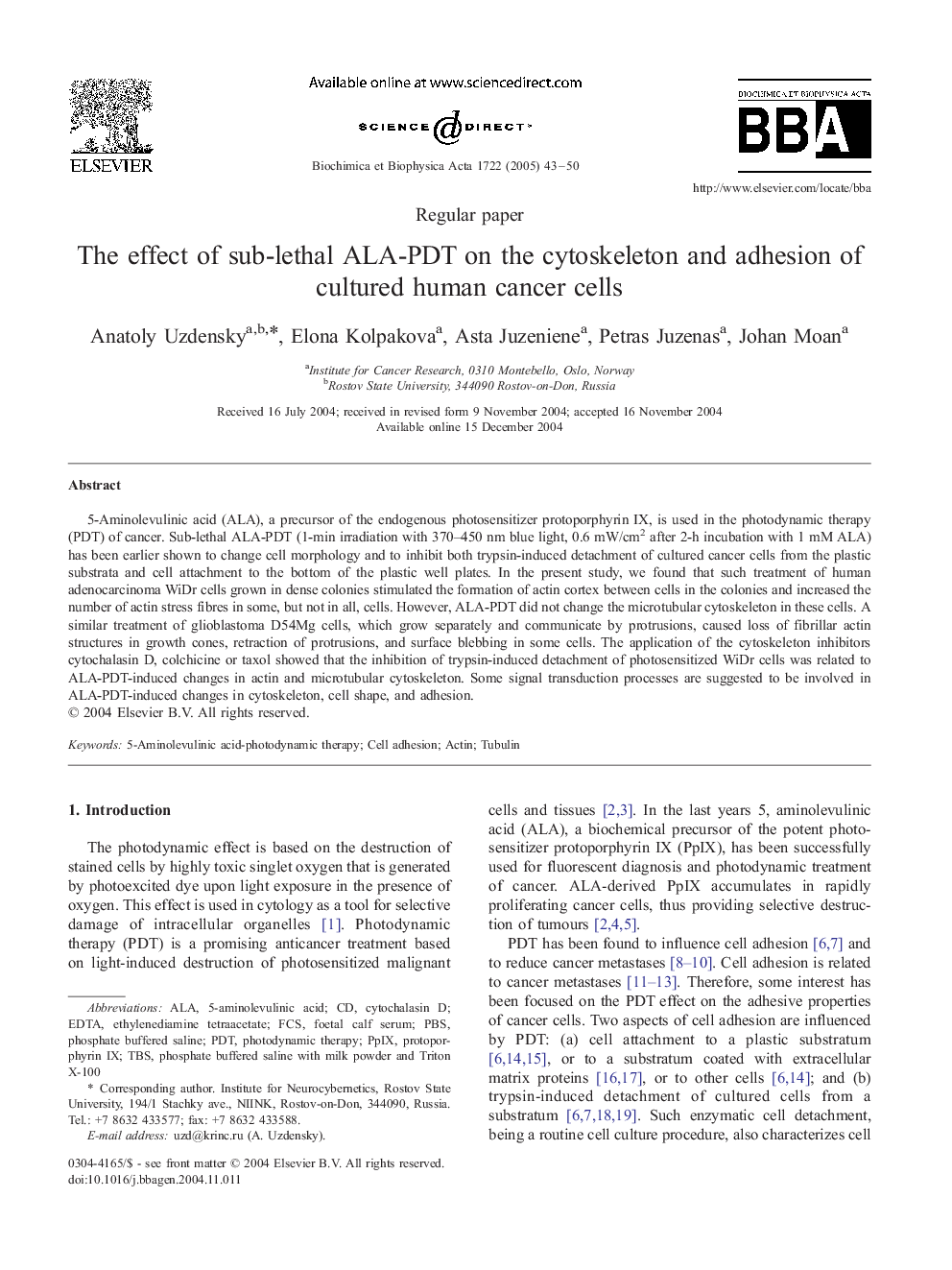| Article ID | Journal | Published Year | Pages | File Type |
|---|---|---|---|---|
| 10801113 | Biochimica et Biophysica Acta (BBA) - General Subjects | 2005 | 8 Pages |
Abstract
5-Aminolevulinic acid (ALA), a precursor of the endogenous photosensitizer protoporphyrin IX, is used in the photodynamic therapy (PDT) of cancer. Sub-lethal ALA-PDT (1-min irradiation with 370-450 nm blue light, 0.6 mW/cm2 after 2-h incubation with 1 mM ALA) has been earlier shown to change cell morphology and to inhibit both trypsin-induced detachment of cultured cancer cells from the plastic substrata and cell attachment to the bottom of the plastic well plates. In the present study, we found that such treatment of human adenocarcinoma WiDr cells grown in dense colonies stimulated the formation of actin cortex between cells in the colonies and increased the number of actin stress fibres in some, but not in all, cells. However, ALA-PDT did not change the microtubular cytoskeleton in these cells. A similar treatment of glioblastoma D54Mg cells, which grow separately and communicate by protrusions, caused loss of fibrillar actin structures in growth cones, retraction of protrusions, and surface blebbing in some cells. The application of the cytoskeleton inhibitors cytochalasin D, colchicine or taxol showed that the inhibition of trypsin-induced detachment of photosensitized WiDr cells was related to ALA-PDT-induced changes in actin and microtubular cytoskeleton. Some signal transduction processes are suggested to be involved in ALA-PDT-induced changes in cytoskeleton, cell shape, and adhesion.
Keywords
Related Topics
Life Sciences
Biochemistry, Genetics and Molecular Biology
Biochemistry
Authors
Anatoly Uzdensky, Elona Kolpakova, Asta Juzeniene, Petras Juzenas, Johan Moan,
